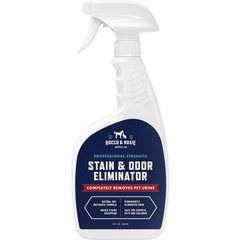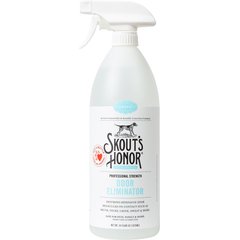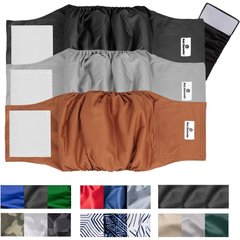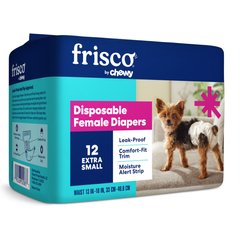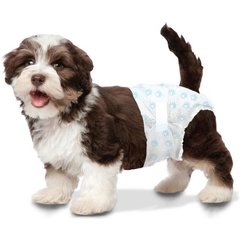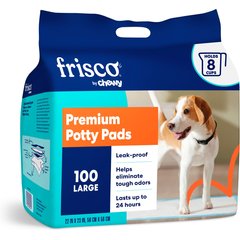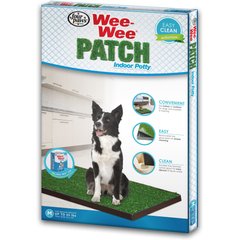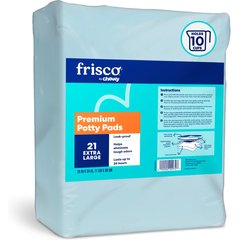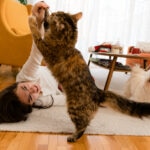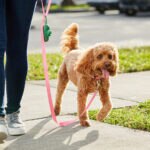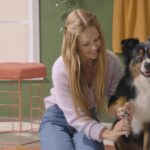Why Is My Old Dog Peeing in the House? And What Can I Do About It?
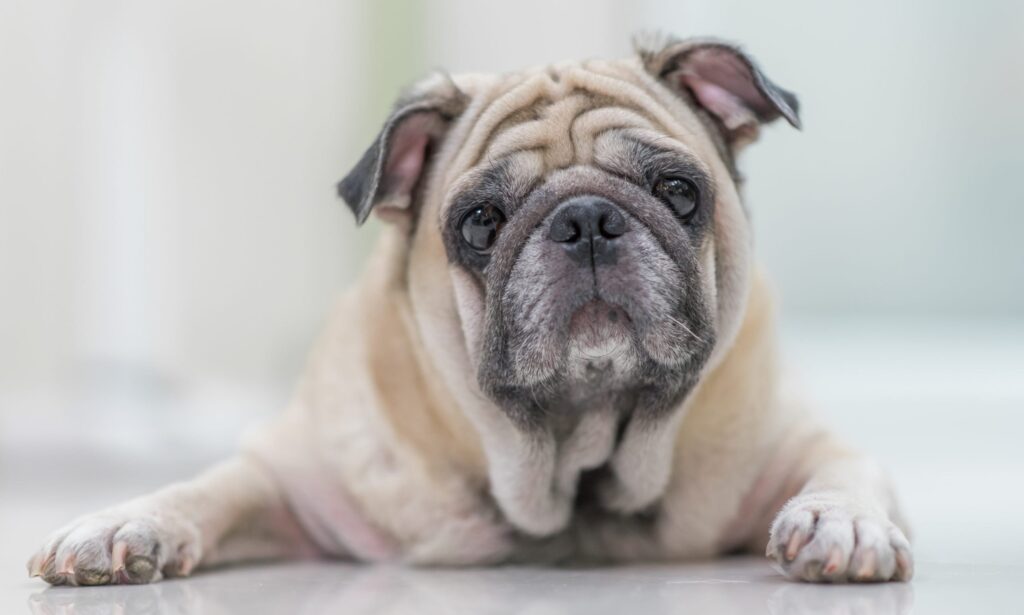
Photo by iStock.com/PotaeThanachai
Your adult dog finished potty training years ago, but you’re suddenly finding a few drops of urine in their dog bed or puddles around the house. Many pet parents think their old dog peeing in the house is a normal sign of canine aging; and while it is, it could also mean that something’s awry.
In many cases, frequent urination in old dogs is actually a symptom of an underlying medical problem—one that should never be ignored. Here, we’ll go through some of the most common reasons for senior dog incontinence and provide some suggestions on how you can manage it.
Old Dog Incontinence: Accident or Illness?
Dog incontinence, by definition, is the involuntary passing or dribbling of urine. It’s easy to brush off urinating in the house as a normal sign of old age. However, it’s often a result of an underlying medical condition or an emotional or behavioral issue such as dog anxiety, stress or a change in routine.
“However, sometimes a senior dog has ‘accidents’ in the house, which seems like the same thing,” says Dr. Julie Buzby, DVM, CAVCA, CVA and founder of Dr. Buzby’s ToeGrips. “They are essentially two different [problems], though sometimes the same underlying issue can cause both of them.”
If your old dog is peeing in the house, your first step is to see your vet to help rule out a medical problem.
“Senior dogs are often walking a tightrope of health that we need to keep in balance. If an owner notices a change—in water consumption, appetite and certainly dog incontinence—it warrants a veterinary visit,” advises Dr. Buzby.
Common Health Issues That Cause Old Dog Incontinence
You won’t be able to diagnose your dog on your own, but it’s helpful to make yourself aware of the possible age-related medical conditions associated with an older dog urinating in the house. This is important so you know what other symptoms to potentially look out for, which in turn can help your vet pinpoint the underlying medical problem. These are the most common reasons a house-trained senior dog may suddenly start urinating in the house:
- Kidney disease: Poor kidney function causes your dog to drink more water, which can lead to frequent urination in senior dogs and breaks in potty training.
- Hormonal imbalance: Diabetes Mellitus, Cushing’s disease and thyroid disease are all associated with hormonal imbalances, which can cause incontinence or frequent urination in old dogs. Additional symptoms include increased thirst and urination, as well as hair loss.
- Urinary tract infections: Urinary tract infections (UTIs) can make old dogs start peeing in the house. Your dog may frequently pass small amounts of urine that appear cloudy and/or tinged with blood. Some other signs that your older dog may be dealing with a UTI are straining to urinate, painful urination and frequent genital licking.
- A tumor within the urinary tract: Bladder cancer can cause many of the same symptoms as a urinary tract infection. It can also lead to frequent UTIs that don’t respond to treatment.
- Bladder stones: In most cases, symptomatic bladder stones will cause urinary obstructions or straining during urination. However, they can also lead to incontinence or frequent urine dribbling.
- Neurological conditions: Some problems in the brain, like dementia, and other parts of the nervous system can cause senior dog incontinence or urinating in the house. Other symptoms of cognitive dysfunction may include behavioral changes, confusion, irritability and a decreased interest in playing.
- Estrogen deficiency: Lower estrogen levels can decrease muscle tone in the urethra and cause urinary incontinence, particularly in older, spayed female dogs.
- Arthritis or mobility-limiting conditions: These medical conditions are often associated with frequent urination in senior dogs since they can make it more difficult for pets to get outside in time to do their business, which can increase the likelihood of accidents.
Diagnosing Old Dog Incontinence
The quickest way to get a diagnosis for your sweet canine is to head to the vet ASAP. Once your veterinarian sees your dog, they’ll perform a physical examination and collect samples.
The exam may include:
- Complete blood count (CBC): This gives your vet more information about the number, size, and shape of your dog’s red and white blood cells and platelets.
- Chemistry panel: This test can help uncover organ dysfunction.
- Thyroid check: This can help determine why your senior dog is peeing in the house.
- A blood pressure test: This is an important test to check out what’s going on with your pup’s body.
This lab work is necessary to assess systemic health, including the urinary system, Dr. Buzby explains. If possible, try to provide your veterinarian with a first-morning urine sample.
“This first-morning sample is important because it will demonstrate your dog’s best renal [kidney] concentrating ability, since he or she has likely not been drinking overnight to dilute the sample,” says Dr. Buzby.
For best results:
- Schedule the vet visit for shortly after your dog wakes up. Again, timing it for the morning means the sample is less likely to be diluted.
- Try not to feed your dog breakfast the morning of your appointment. Water is fine. Food will increase the likelihood of lipids in the blood sample, which can affect results, Dr. Buzby explains.
- Prevent your dog from urinating before their vet visit. This allows your veterinarian to take a sterile urine sample directly from your dog’s bladder—using a needle and syringe—to test for bacterial infection and the overall health of the kidneys and bladder. “It sounds intimidating, but it’s very simple, fast, and easy,” reassures Dr. Buzby.
Not sure whether to see a vet? Use PetMD’s Symptom Checker. Answer a few questions about your pet’s symptoms, and the vet-created online tool will give you the most likely causes and next steps.
How Do I Stop My Senior Dog From Peeing In The House?
The best way to stop your senior dog from peeing in the house is to identify and correct the underlying problem. For example, if a hormonal imbalance is the cause, you’ll want to work with a veterinarian who can recommend the right medications to fix the root problem. If your dog is dealing with separation anxiety or exhibiting marking behavior, you may be able to work with a trainer who can help you properly address your dog’s needs.
Treatment is a longer-term strategy though. As you work with your vet to determine why your senior dog is peeing in the house, you will need to find ways to keep your home clean and minimize your dog’s indoor accidents. Here are a few tips:
Clean Up Messes Quickly
Dogs are often drawn to the same areas they’ve peed before, so clean the soiled areas promptly and thoroughly. You can also try an odor-eliminating product, like Nature’s Miracle Dog Stain & Odor Remover, which is great to have on hand.
Recommended Products
Try a Dog Diaper
Even though your senior dog is urinating in the house, it’s not OK to limit their water intake, even at night or when you are at work. Particularly for a senior dog with health issues, limiting access to water could cause serious harm.
Instead, you can use dog diapers or belly bands to absorb urine and keep your floors clean. Make sure you consider your dog’s size and anatomy when choosing a diaper or belly band. Wee-Wee Disposable Dog Diapers come in four sizes and fit both male dogs and female dogs.
Recommended Products
Introduce an Indoor Potty Area
You can also bring the bathroom indoors, so to speak, for dogs who can no longer wait until they’re let outside. You can use disposable Frisco Training & Potty Pads or the Wee-Wee Patch Indoor Potty.
If your senior dog has never been trained to use dog potty pads or an indoor potty, it may help to soak up some of their urine with a paper towel and place it over the new potty area so they will be attracted to their own scent. Praise and reward your dog for using the new “bathroom,” just as you would when you first started the potty training process.
Recommended Products
The Bottom Line
Being a dog owner is a long-term commitment. It’s certainly no fun living with senior dog incontinence or frequent urination in elderly dogs. But remember, there’s probably an underlying health problem or medical issue that’s leading to your older dog peeing in the house. Instead of defaulting to frustration, try to approach the situation with some love, kindness, patience and a problem-solving mentality.
Thankfully, help is on hand—both through your veterinarian and with ingenious dog care products—to help you stop your dog from peeing in the house and ensure a good quality of life together as your dog ages.

